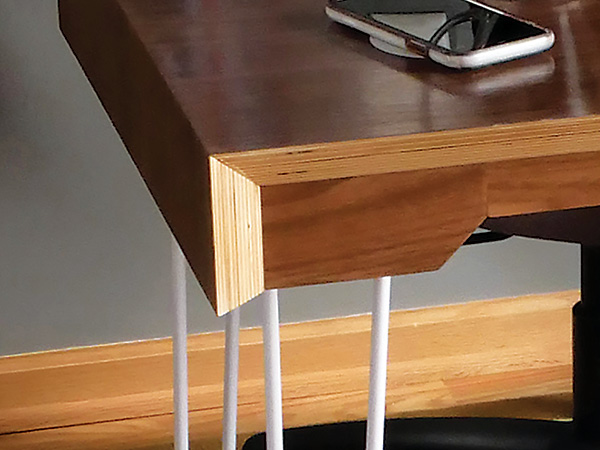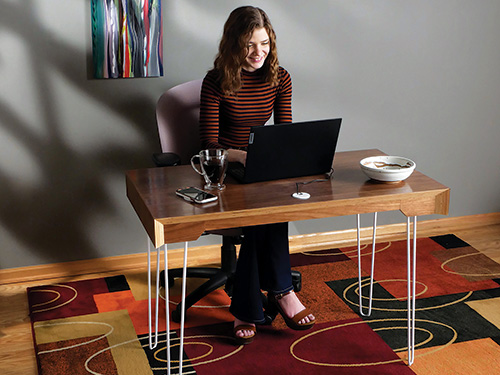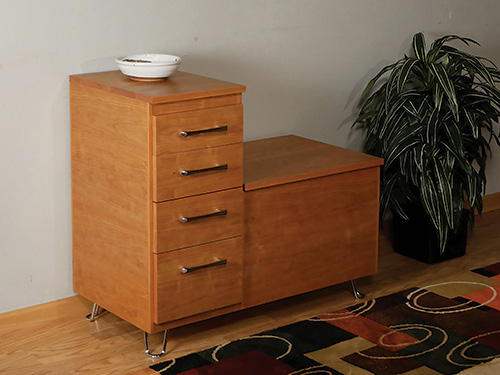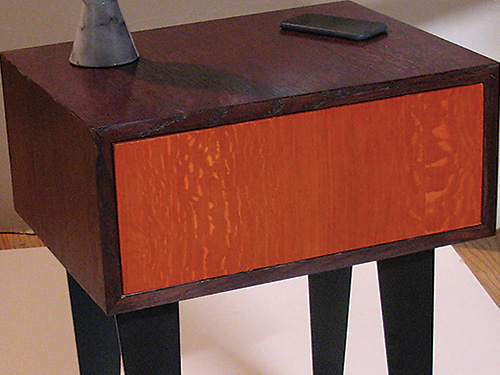
Plywood — a flat sheet constructed of several thinner layers of wood glued together across grain — has been around since the ancient Egyptians and Greeks. It solves wood movement issues for us now, and clearly that was a problem for their builders, too.
In today’s hobby and professional woodshops, plywood and other sheet stock is a very useful, economical and nearly essential product for solving a variety of construction challenges.
Sheet stock such as MDF or a laminated core covered with a hardwood veneer is ubiquitous in modern cabinetry. We also find plywood sides, backs and tops used to make inexpensive stringed instruments. Thin, smooth plywood is a common underlayment for all sorts of flooring. And CDX plywood used for the exterior of home building is the best sheathing you can find. The scope of sheet stock’s use is pretty amazing. But what about for us home-shop builders?
In the Home Shop

As most woodworkers know, sheet stock provides wide and long material that is not really affected by the seasonal wood movement of solid woods. A common saying of woodworkers is, “The only things in life you can’t avoid are death, taxes and wood movement.” The caveat to that is, “Except with plywood.”
Given its cross-grain laminated construction, the expansion and contraction of plywood’s wood fibers are constrained. That is why it is so useful in creating casework furniture and cabinetry. If you are building a big box, sheet stock is your friend. But which friend should you choose for which task?
If you are building casework furniture, veneer-core plywood with a hardwood species that will match your solid wood components is the way to go. Hardwood veneer-covered MDF or lumber core are both suitable for the task but are much heavier. Their main advantage is that screws and other fasteners will hold in their edges with greater strength than veneer core. Use grades A/A or A/B for best results. If you are painting your work, grade B/B in a birch-covered plywood or other close-grained species is a great choice.
Covering exposed edges of sheet stock can be done by gluing on strips of solid wood that match the surface veneer. You can also get “iron-on” veneer tape in many species that is fast and easy to apply, but it’s a bit less durable than solid wood.
In modern-styled furniture, exposed edges of veneer-core plywood is a desirable design element. Baltic birch and its cousin, ApplePly®, have thin veneers glued together without voids. They are the go-to materials for this sort of construction.
A Good Cover Up

One big advantage of sheet stock’s dimensional stability is that it makes a great substrate for veneering. You can cover those projects with any species of veneer you’d like — a very economical use of fancy species. MDF is often preferred for a veneer substrate, as its smooth surface is ideal for achieving a flawless veneer layup.
Veneer comes in many varieties of species, figure patterns and product options — solid wood, paper-backed, peel-and-stick — that add unlimited options for creativity. And the fact that the core will stay flat allows the designer/builder to ignore the limits of solid wood furniture. Some of the most wonderful and expensive furniture in the world is made with veneer-covered sheet stock.
Hardworking
Shelving is another great use of plywood. You can make shelves of differing widths and lengths without having to glue up narrow boards. For utility shelves, you don’t even need to cover the edges — just sand them smooth. MDF or particleboard can work for shorter shelves, but anything over 24″ of unsupported length will sag. Veneer-core plywood shelves up to 36″ will stay flat in normal use without a center support. If longer than that, glue rabbeted hardwood stiffeners to the front and back, and you can go much longer, up to 6 ft or so. Additional supports are still advisable.
Quality Levels Vary

The quality of plywood can vary, but less so with MDF. Some hardwood-covered plywood has incredibly thin veneer. Internal voids and “telegraphed” patches are to be avoided. Sadly, quality is often hard to determine. But if the surface veneer looks too thin to you, it probably is. Buying sheet stock from a reputable supplier is a good step toward quality control. “Big box store” quality will be hit-and-miss.





